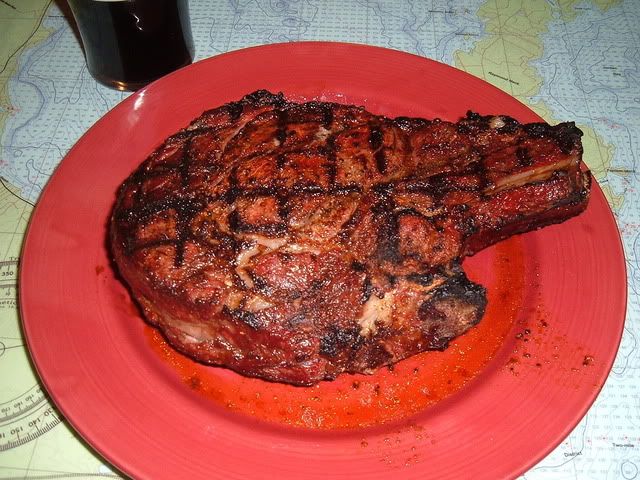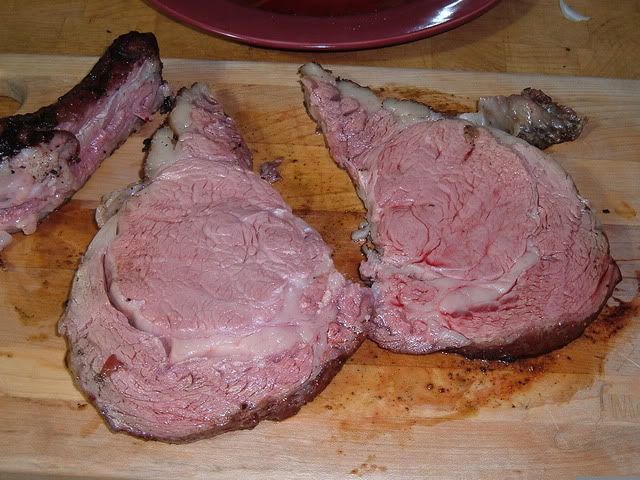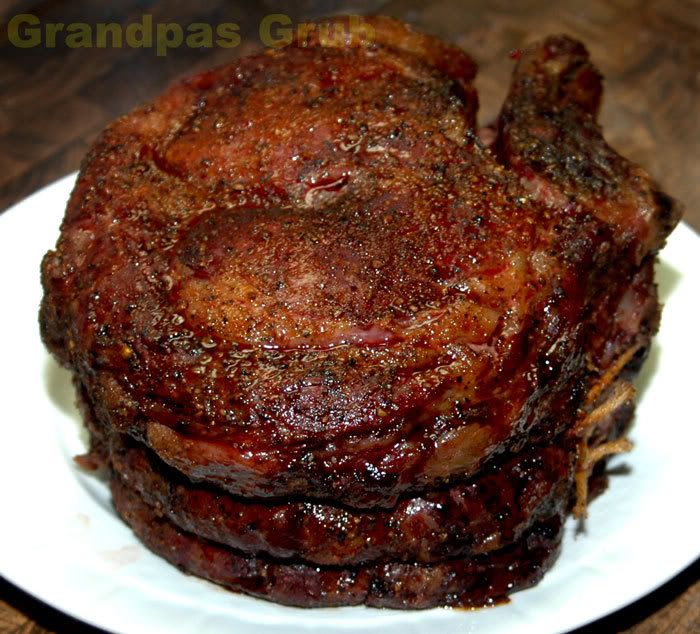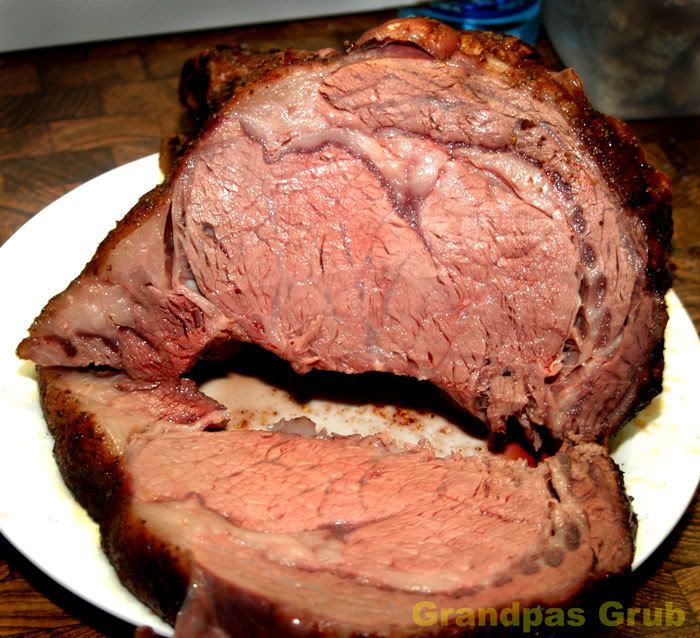Welcome to the EGGhead Forum - a great place to visit and packed with tips and EGGspert advice! You can also join the conversation and get more information and amazing kamado recipes by following Big Green Egg to Experience our World of Flavor™ at:
Want to see how the EGG is made? Click to Watch
Facebook | Twitter | Instagram | Pinterest | Youtube | Vimeo
Share your photos by tagging us and using the hashtag #BigGreenEgg.
Share your photos by tagging us and using the hashtag #BigGreenEgg.
Want to see how the EGG is made? Click to Watch
Prime rib help
Options
Comments
-
-
I agree. It's a lot easier to cook the roast and then sear. T-Rex works great as well but I think the chances of overcooking are greater.
SteveSteve
Caledon, ON
-
OK, thanks...
-
Just be sure to plan ahead on handeling your plate setter when you switch from indirect to direct. It's awkward and HOT HOT HOT.
-
Do you do the sear direct at the end? Turning a couple of times?
-
I did it that way at Christmas, and my 3 rib turned out great.
Be sure to pull and let rest at around 125° to 128° while you're waiting for the egg to get hotter for the sear. Mine climbed 8° while it rested, so consider that for how rare or well done you and your guests want it.
Don't get too hung up on the sear. Some don't even sear it at all, and they produce great cooks. It's really a lot easier than you think.
Let us know how it turns out. -
you can either trex or reverse sear, i think both have there merits. reverse sear gives the best uniformity of redness thru out and shows real well. trex imho has better flavor on the exterior and the end cuts will be more done for people that like it more done while still having some rare pieces in the middle for those that like that. either method, dont sear over 500 and if the roast has a lot of fat you will need a drip pan in place for the searing which is more like a high temp roast than an actual sear.. if more than 2 like end cuts, i would trex them as two bone steaks searing them flat on the side like steaks gives the same beautiful apperence as the reverse method, we like end cuts here and go that route usually. when roasting after the sear its better to do it around 325 with a bone in roast. heres a scrawny thin cheap 2 bone that was trexed direct and finished raised grill

cote de beuf
one extra benefit with the reverse sear is that there is no panic mode when getting everything to gether at the end, you can do the sear after a short rest or a lot longer rest when everything is coming together.fukahwee maineyou can lead a fish to water but you can not make him drink it -
Follow the link DaynaGreaseball provided and here are my results.
My only change is that I did not sear. I might try an end sear but I sure like the way mine turned out.
GG

-
if its a fatty prime rib go inderect and think high temp roast istead of sear, if a lot of fat drops down into the lump your roast will taste sooty. the only time i sear a prime rib direct is if its a small choice cut without alot of fat, if its prime its going to have a good amount of fatfukahwee maineyou can lead a fish to water but you can not make him drink it
-
Here is another method.
http://www.nakedwhiz.com/madmaxprimerib.htm
I actually like to encrust with salt, but that is another recipe. -
That looks beautiful and I'm sure it tastes as good as it looks...
DarianThank you,DarianGalveston Texas -
I will have to give that one a try, looks good.
GG -
Thanks,
The best Prime Rib we have ever had.
GG -
The above is all very helpful. Does anybody favor the "sear first" method?
-
Either way is really ok. The results aren't too different. It's just that timing might be a little better on the reverse sear. I've always removed the plate setter when I reverse seared, but the observation of drippings affecting the taste are well taken. I might go back to pre-searing. I hate fooling with a hot plate setter.
If you're more comfortable doing it tRex (sear first) do it. The process is the same...just reversed. I really think the most important thing here, is when you pull it. Just make sure the internal temp doesn't get too high. You will want to wrap in foil and let it rest for maybe 30/45 min. before cutting and serving. The internal temp will climb maybe 6° to 8° during this period.
I've found that pulling at 125/128°, and after the rest priod, you'll get nice warm red centers on the two middle cuts and warm pink centers on the outer cuts. If you have those who want them more well done (sinful), just pull it a little later...say 130/135°.
I promise it's easier than you think. Just an expensive first-time. Good luck!
Categories
- All Categories
- 182.8K EggHead Forum
- 15.7K Forum List
- 459 EGGtoberfest
- 1.9K Forum Feedback
- 10.3K Off Topic
- 2.2K EGG Table Forum
- 1 Rules & Disclaimer
- 9K Cookbook
- 12 Valentines Day
- 91 Holiday Recipes
- 223 Appetizers
- 516 Baking
- 2.4K Beef
- 88 Desserts
- 165 Lamb
- 2.4K Pork
- 1.5K Poultry
- 30 Salads and Dressings
- 320 Sauces, Rubs, Marinades
- 543 Seafood
- 175 Sides
- 121 Soups, Stews, Chilis
- 36 Vegetarian
- 100 Vegetables
- 313 Health
- 293 Weight Loss Forum


